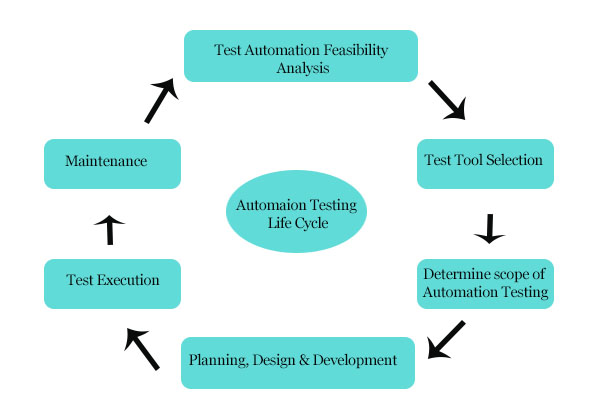Home >>Selenium Tutorial >Selenium Basic Terminology
Selenium Basic Terminology
Selenium Basic Terminology
Before we start with this tutorial, let us first understand some of the main principles connected with an application's Automation research.
With the growing need for effective software products, each software development community requires to carry out a series of tests before the final product is released into the market.
Test engineers aim to detect the errors or bugs before the software product is released, but there are often flaws in the delivered software. Also for the strongest manual verification procedures, there is still a risk that the finished software product will be left with a flaw or that it may not be able to fulfill the end user requirement.
Automation Testing
Automation testing uses the advanced resources to optimize the implementation without any human intervention of manually designed test cases. Automation testing software may view test data, control test execution and evaluate the real result to the expected outcome. Comprehensive test reports of the system under evaluation are produced according.
Automation testing covers all output and usability tests on an program.
Based automation is used to simplify practical test cases. Regression experiments, for example, are automated and are repeated in nature.
- Automation of results is used to eliminate the non-functional output test cases. For example, regression tests, which are repetitive in nature, are automated.
- Automation of performance is used to eliminate the non-functional output test cases. For eg, measure the application's response time under considerable load (say 100 users).
Automation Testing tools that are used to automate operations:
- Quick Test Professional, available from HP.
- Rational Robot, supplied by IBM.
- Based UI, provided by Microsoft.
- Selenium, it is open source.
- Auto It, Source opens.
Application Tools used for non-functional automation testing:
- Load Runner, accessible from HP.
- JMeter, Apache provides.
- Burp Suite, made accessible from PortSwigger.
- Acunetix, available through Acunetix.
Automation Testing Life Cycle

Why Automated Testing
Automation testing has unique benefits to optimizing some software's long-term effectiveness. The major advantages of the test automation are:
- Automated testing has long been seen as useful for major computing organizations. However, smaller organizations are still considered to be more expensive or difficult to execute.
- Automated testing tools may be programmed to build and perform test scripts at a specific time without any human involvement . For example, automated testing can be performed overnight and the participants can review the automatic test results the following morning.
- Automated testing tools allow pre-recorded and predefined behavior to be playback.
- Often regression testing is supported by automation testing.
- column ten fields in one column
- It provides unlimited iterations on the implementation of test cases.
- It provides disciplined audio of test cases.
- Automated check generates personalized recording of faults.
- Less prone to mistake as compared with manual testing.
Test Automation for Web Applications
If we look at what kind of software apps that exist in the current market scenario, most software applications are developed as web-based programs to operate in an internet browser. The web-based application development approach differs widely among enterprises and organisations.
Across the age of highly interactive and sensitive software processes, in which many organizations use a type of agile methodology, test automation is also becoming a software project requirement.
The most effective way to perform test automation for web application is to adopt a pyramid testing strategy. This pyramid testing strategy includes three different levels of automation tests. Unit testing represents the basis and the largest percentage of this pyramid for test automation. Next comes checking the application sheet, or the API. And at the end, Interface tests are right at the edges. The pyramid is sort of like

